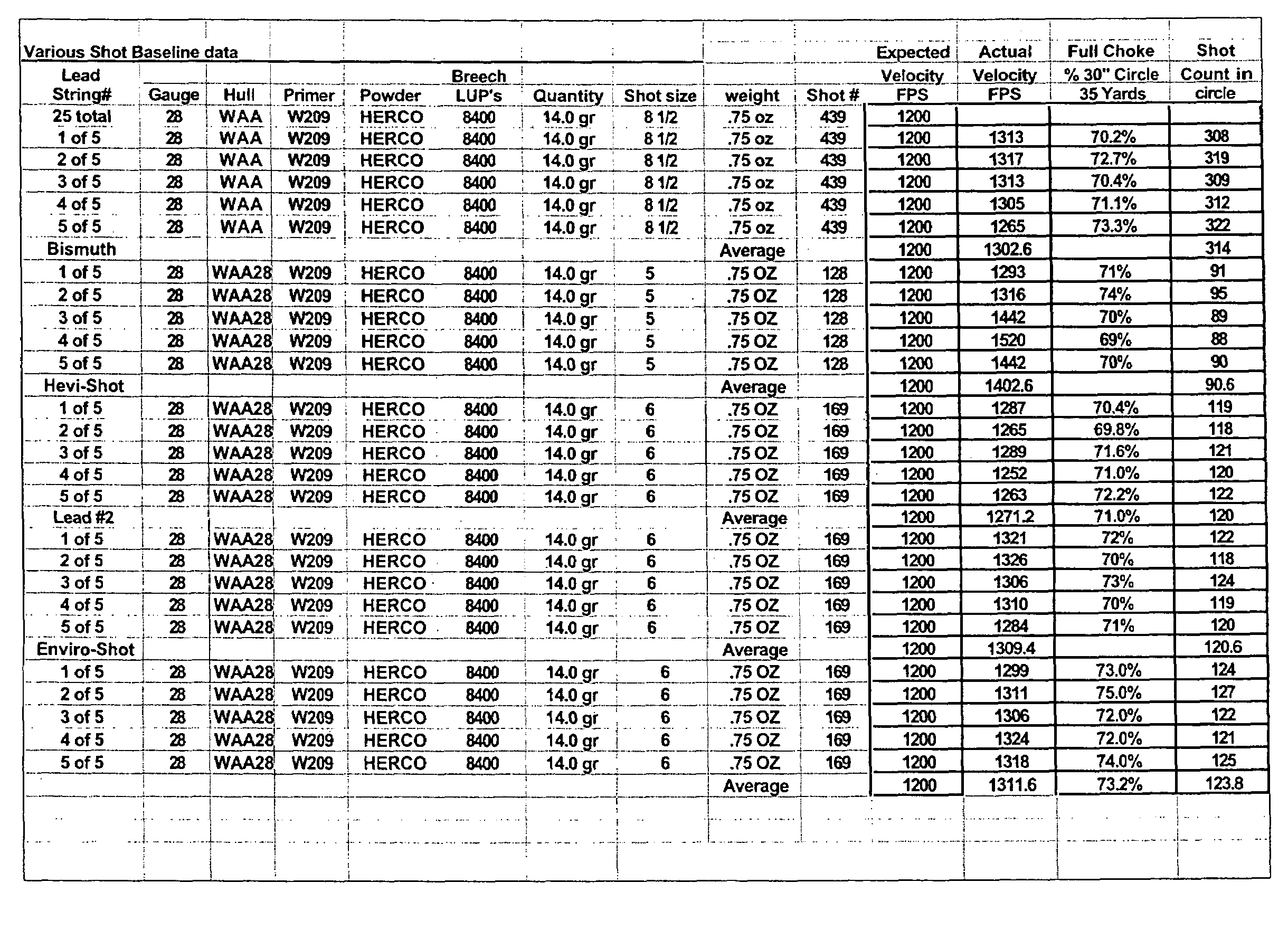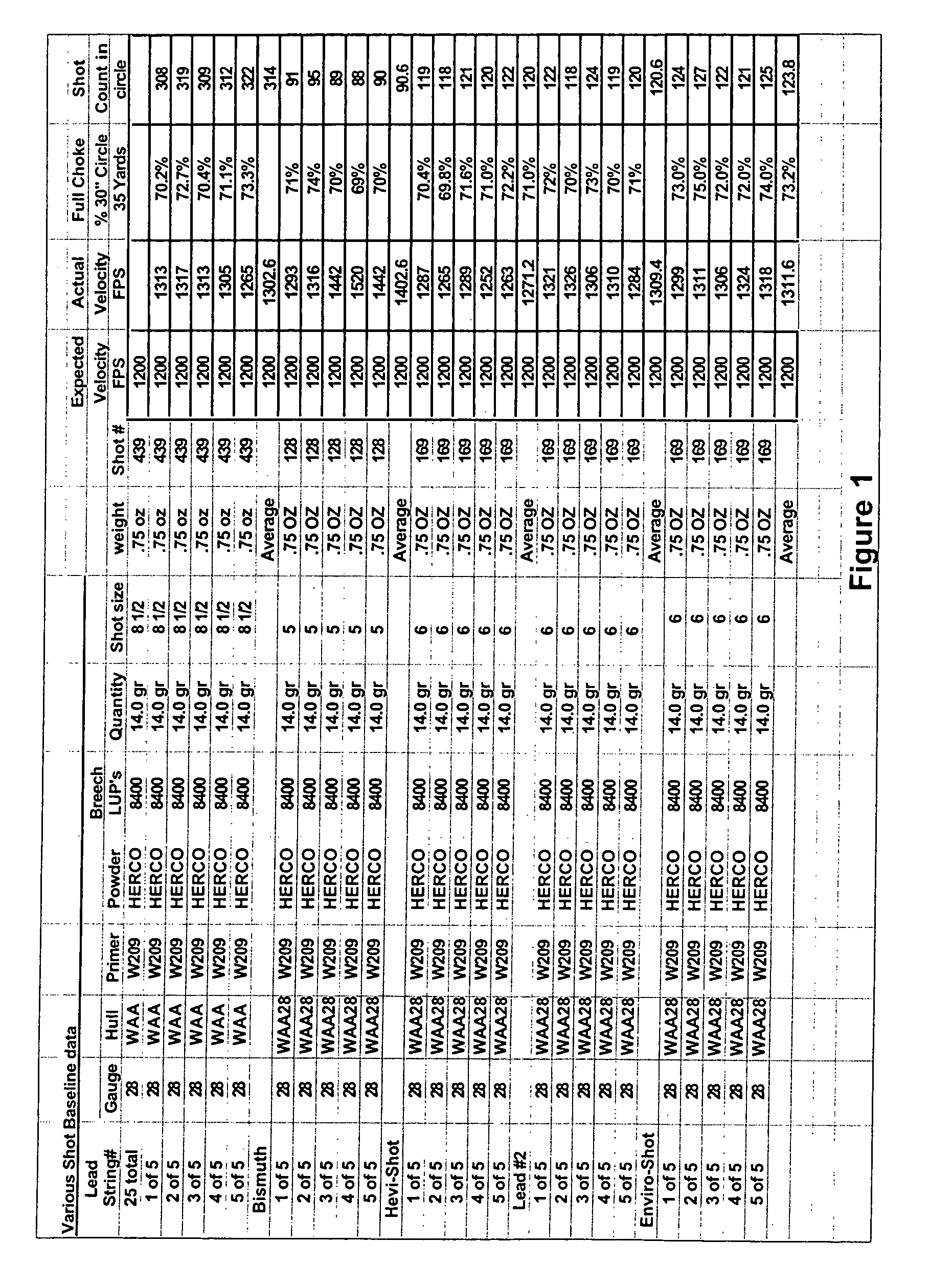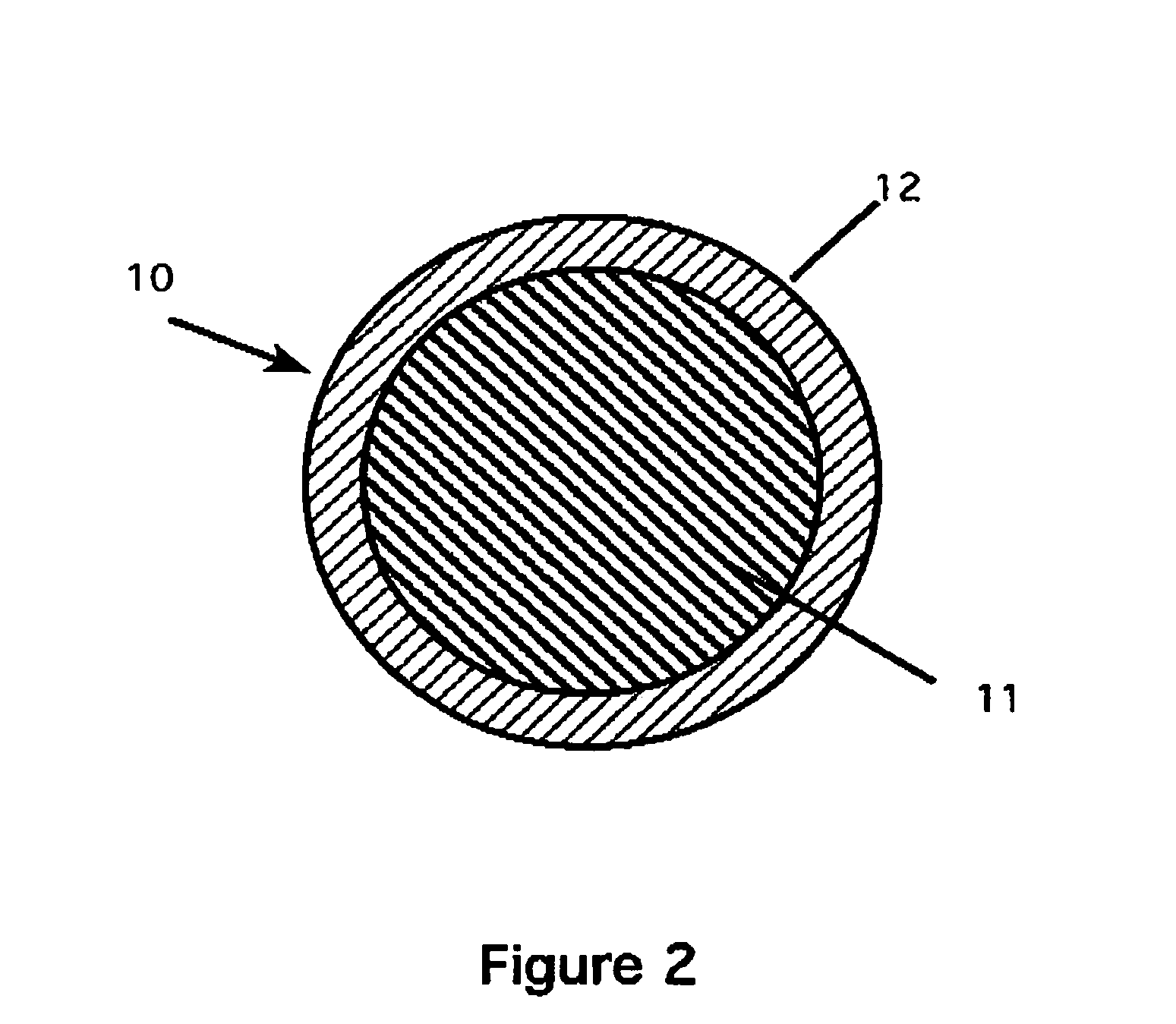Method of making an environmentally safe substitute for lead shot
a technology of lead shot and substitute, which is applied in the field of substitutes for lead shot tools, can solve the problems of significant negative impact of steel shot, no alternative shot type currently available, and higher pressure within the gun barrel
- Summary
- Abstract
- Description
- Claims
- Application Information
AI Technical Summary
Benefits of technology
Problems solved by technology
Method used
Image
Examples
example 1
[0054]The use of powder and punch press technology to produce a finished sphere equivalent to # 8 shot at the exact equivalent density of lead using a core of tungsten. Note that the equivalent diameter of #8 shot is 2.29 mm. Tungsten powder (−200 mesh) is pressed in a punch press at 25 tons to form an inner core of 1.257 mm. This inner core is then cleaned to remove residual press oils. The resulting inner core is then inserted in a second press. This press uses the inner core and a quantity of bismuth / tin powder (−200 mesh), which is pressed at 23 tons to form a finished sphere of 2.29 mm. By using an inner core of 1.257 mm and a final sphere size of 2.29 mm, the effective density is exactly equivalent to that of lead, and the diameter is precisely that of # 8 shot with an approximate hardness equivalent to that of lead.
example 2
[0055]The use of powder and pre-made core technology to produce a finished sphere equivalent to #7.5 shot at the equivalent density of a heavy shot (1.1× density of lead) using a core of tungsten carbide. Note that the equivalent diameter of #7.5 shot is 2.41 mm. A tungsten carbide core of 1.930 mm is selected as the inner core for this example. The core is cleaned and referred to below as the inner core. A punch press uses the inner core and a quantity of bismuth / tin powder (−200 mesh), which is pressed at 23 tons to form a finished sphere of 2.41 mm. By using an inner core of 1.930 mm and a final sphere size of 2.41 mm, the effective density is exactly equivalent to that of 110% of lead, and the diameter is precisely that of # 7.5 shot. The bismuth / tin alloy has an approximate hardness equivalent to that of lead.
example 3
[0056]The use of powder and punch press technology to produce a finished sphere equivalent to #4 shot at any density below that of pure Bismuth tin using a core of mixed tungsten / bismuth. Note that the equivalent diameter of #4 shot is 3.30 mm. A blend of tungsten powder (−200 mesh) and 97 / 3 bismuth / Tin and is pressed in a punch press at 25 tons to form a inner core of 2.167 mm. This inner core is then cleaned to remove residual press oils. The inner core is placed in a punch press with a quantity of bismuth / tin powder (−200 mesh) and pressed at 23 tons to form a finished sphere of 3.30 mm. For the case where the density of the finished shot equals that of bismuth tin (9.71 g / cc, or 86% of lead), the inner core is comprised of 100% bismuth tin. For the case where the density of the finished shot equals that of a heavy shot (12.43 g / cc, or 110% of lead), the inner core is comprised entirely of tungsten, with an outer annulus of bismuth / tin. By using an inner core of 2.167 mm and a fi...
PUM
| Property | Measurement | Unit |
|---|---|---|
| density | aaaaa | aaaaa |
| equivalent diameter | aaaaa | aaaaa |
| size | aaaaa | aaaaa |
Abstract
Description
Claims
Application Information
 Login to View More
Login to View More - Generate Ideas
- Intellectual Property
- Life Sciences
- Materials
- Tech Scout
- Unparalleled Data Quality
- Higher Quality Content
- 60% Fewer Hallucinations
Browse by: Latest US Patents, China's latest patents, Technical Efficacy Thesaurus, Application Domain, Technology Topic, Popular Technical Reports.
© 2025 PatSnap. All rights reserved.Legal|Privacy policy|Modern Slavery Act Transparency Statement|Sitemap|About US| Contact US: help@patsnap.com



